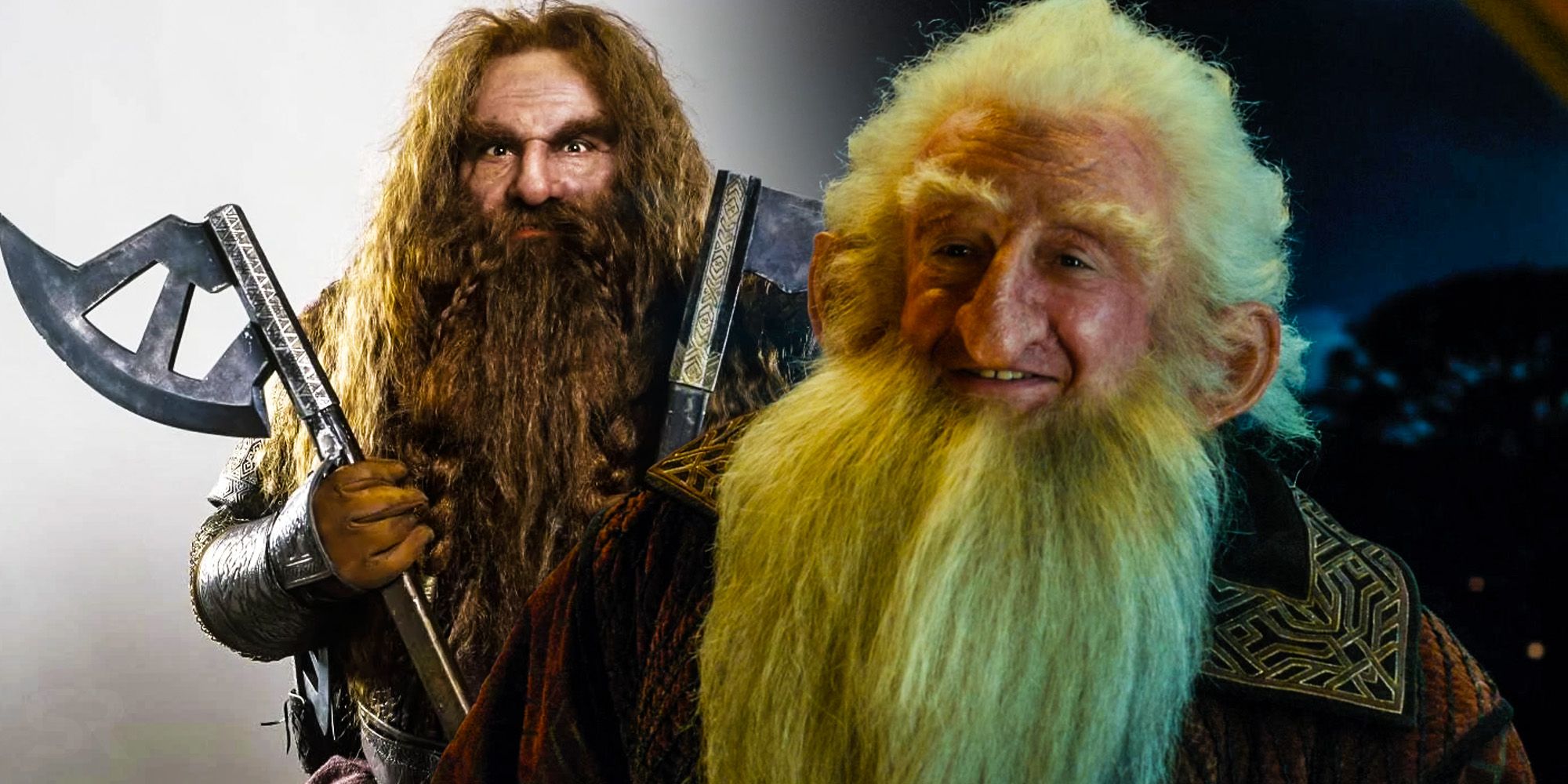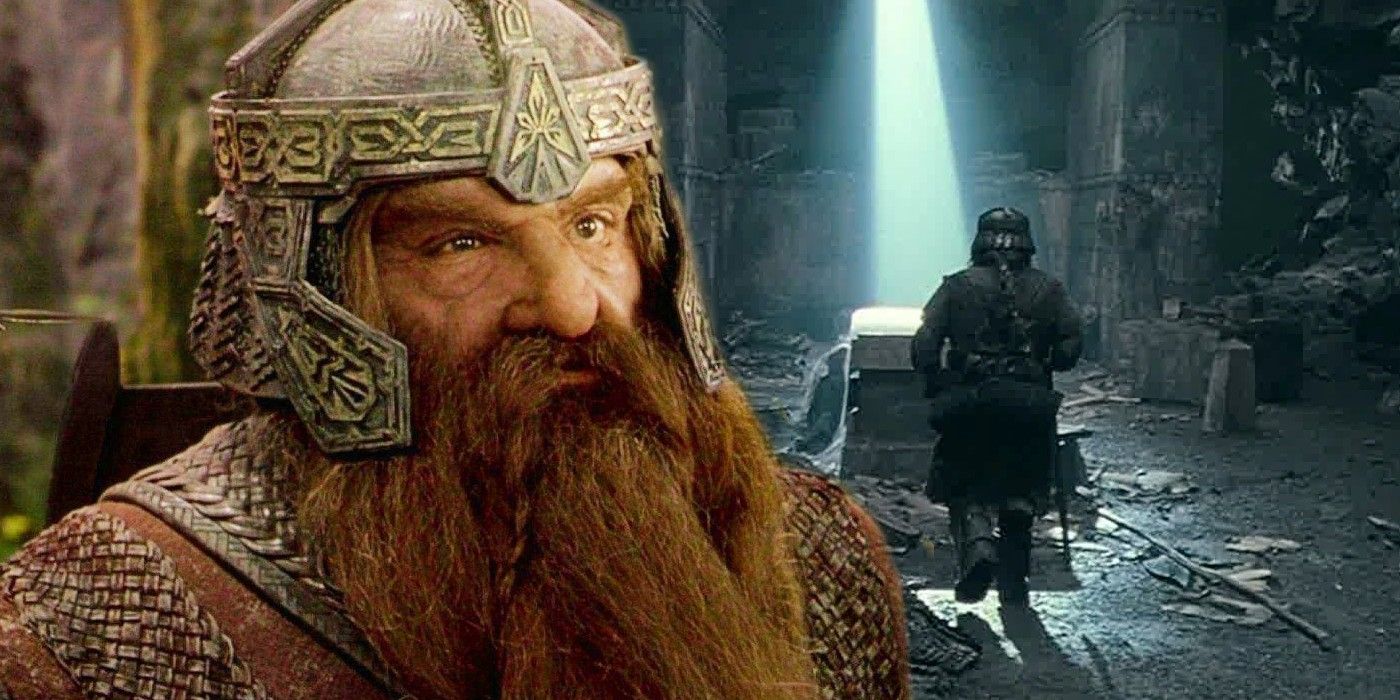Aragorn’s sword, Andúril, is given the most narrative weight in terms of ancient, powerful heirloom weapons in Peter Jackson’s The Lord of The Rings, yet Gimli’s battle-axe has its own secret origin story that links back for generations, even as far as characters from The Hobbit and beyond. Gimli is seen using this dual-bladed axe throughout the trilogy after a subtle weapon change during The Lord of the Rings: The Fellowship of the Ring, even though his initial seizure of the axe isn’t given its own narrative beat like the gifts of Galadriel are. Although this axe only appears in the Lord of the Rings movies, its importance to Gimli and to his family can’t be overstated, nor can the cost of acquiring it for both him and his ancestors.
The stories of The Hobbit and The Lord of the Rings trilogies intertwine across decades and both follow a band of adventurers in the third age of Middle-earth. The Hobbit chronicles the journey of a group of dwarves under Thorin II Oakenshield, the ousted Dwarven prince of the Lonely Mountain, in their quest to reclaim their home from the dragon Smaug. Among their company resides both Gimli’s father, Glóin, and Gimli’s second cousin, Balin, whose wisdom and strength help the dwarves reclaim the kingdom of Erebor. The Lord of the Rings, meanwhile, details the quest to destroy the One Ring and prevent the return to power of the Dark Lord Sauron, the first leg of which Gimli undertakes 60 years after the events of The Hobbit.
But the connection between these two quests lies not only between the familial relations of the dwarves participating in them, but in the weapons they bear, or will bear. Moria, also known as Khazad-dûm, is a fraught and deeply entrenched place in the lore of The Lord of the Rings. The events that transpire there are both tragic and unforgettable, and for none more so than Gimli. It is there, in The Fellowship of the Ring, that Gimli learns all about Balin's death and originally retrieves Balin’s secret heirloom axe he uses for the rest of the trilogy.
Balin reclaims this weapon when he first leads an expedition to reclaim the lost city of Moria after the events of The Hobbit. The ax, which is thought to be Durin’s Axe, is a heritage treasure from Durin I, the eldest of the seven original dwarves and the founder of the dwarves of Durin’s Folk. Unfortunately, Balin’s expedition and lordship of Moria ends within a few years of its beginning, as the mines are reclaimed by orcs and goblins and all the dwarves are killed.
Gimli doesn’t learn of the fate of his cousin’s expedition, however, until the Fellowship travels to Khazad-dûm in hopes of safe passage along their journey. While exploring the deserted halls of Moria's Durin Dwarves, the Fellowship comes across Balin’s tomb, as well as a book that describes the end of Balin’s expedition. After the Fellowship is beset by the orcs that brought about his family’s demise, Gimli reclaims Durin’s Axe while in a fight against a cave troll. Ever after, he’s seen carrying it on his back and using the weapon to great effect against orcs and Uruk-hai alike.
Peter Jackson’s The Lord of the Rings movies, as immersive and detailed as they are, don’t have the capability to portray the full depth and scope of lore the books afford them. As such, some of the main secondary characters don’t receive all of the narrative weight available to them. However, the movies do still pay homage to these characters’ independent goals and heritages, such as the scenes of Gimli’s ax’s secret origin, and it's details like these that help make these movies as full and inspirational as they are.


